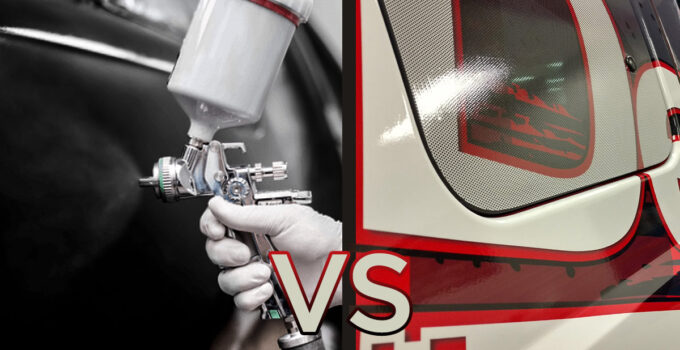Dive into the exhilarating and diverse world of vehicle customization. Whether you’re a car enthusiast seeking to create a unique aesthetic, or a business owner aiming to showcase your brand on the move, transforming your vehicle is an impactful way to express your personality and gain attention on the road. The most common and striking options for these dramatic vehicle transformations are wrapping and painting. Each offers a distinct set of advantages and drawbacks, and choosing between them requires careful consideration. This article aims to assist you in navigating this landscape by providing a detailed comparison between these two primary methods of vehicle customization, considering factors such as cost, durability, and aesthetics.
The Basics of Vehicle Wrapping
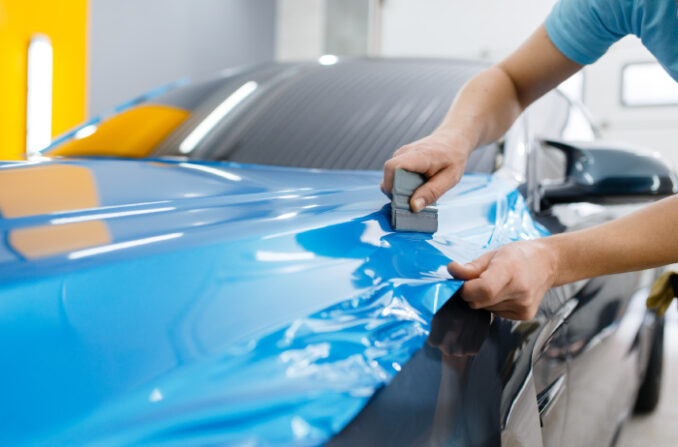
Source: carcility.com
Vehicle wrapping is a modern approach to vehicle customization that involves applying a thin layer of vinyl film over your car’s exterior. The marketplace offers a vast array of wrap types to choose from, including matte, glossy, and metallic finishes, clear protective films, and custom printed designs catering to any conceivable theme or style. The process of wrapping a vehicle commences with a thorough cleaning to ensure any dirt or debris that might interfere with the wrap’s adhesion is removed. Then, the vinyl film is meticulously applied, often using heat to facilitate its smooth adherence to the vehicle’s various contours. Depending on the complexity of the design and the size of the vehicle, the process usually takes between 1-5 days, making it a relatively quick way to transform your vehicle’s appearance.
The Costs of Vehicle Wrapping
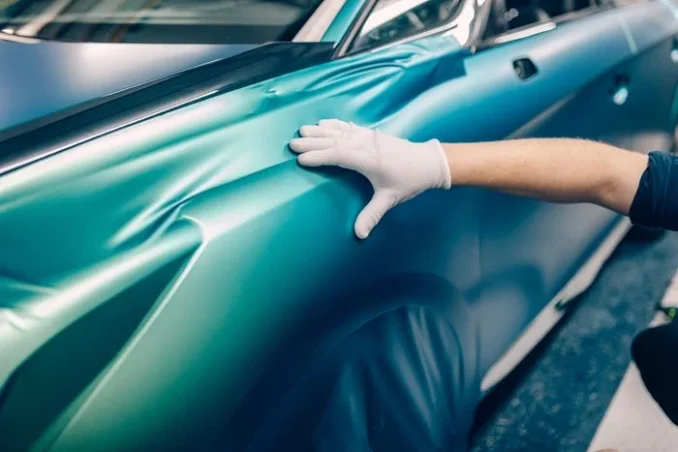
Source: familyhandyman.com
The cost of vehicle wrapping can significantly vary, heavily influenced by factors like the quality and type of wrap chosen, the size and complexity of the vehicle, and the prevailing labor costs in your area. As a rough estimate, you can expect full vehicle wraps to typically cost between $1,500 and $5,000. However, when considering the cost, it’s essential to factor in not only the initial expenditure but also the potential savings in terms of maintenance and increased resale value. A quality wrap can protect your vehicle’s original paintwork from minor scratches and UV damage, maintaining your vehicle’s aesthetic appeal for longer.
Pros and Cons of Vehicle Wrapping
Vehicle wraps offer numerous benefits, particularly their high degree of customizability. They allow for intricate designs and vibrant colors that would be challenging to achieve with paint. Moreover, wraps provide a protective layer to your vehicle, preserving the original paintwork. If the wrap is removed, it leaves the original paintwork unscathed, and doesn’t impact your vehicle’s resale value. However, wraps are not as durable as a quality paint job, and cheaper wraps may start to deteriorate, fading or peeling within a few years. While high-quality wraps can imitate the gloss of paint, they can’t quite match the depth and brilliance of a well-executed, high-quality paint job.
The Basics of Vehicle Painting
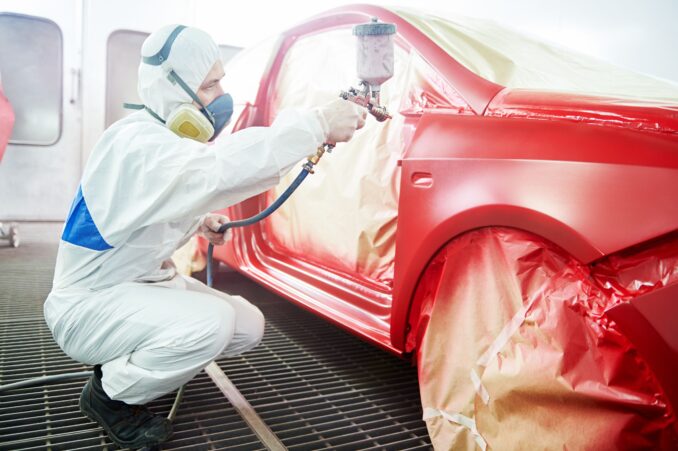
Source: caranddriver.com
Vehicle painting is a traditional, time-honored method of car customization. This process involves the meticulous application of several layers of primer, paint, and clear coat, resulting in a durable, glossy finish. The paint types available are vast, from basic solid colors to metallic, pearlescent, and custom mixed hues that can be tailored to any preference. The process of painting a vehicle is undoubtedly more labor-intensive and time-consuming than wrapping, often taking a few weeks to complete. The procedure begins with removing the old paint and carefully prepping the car’s surface. This is followed by the gradual application of several layers of paint and clear coat, with ample drying time between each coat to ensure a seamless finish.
The Costs of Vehicle Painting
Like wrapping, the cost of painting a vehicle can vary considerably. The price is influenced by factors such as the quality and type of paint selected, the color choice (darker colors often cost more due to the increased pigment), the size and complexity of the vehicle, and the labor rates in your region. A basic paint job can cost as little as $500, but if you’re after a high-quality finish using premium paint, you could be looking at an investment upwards of $5,000.
Pros and Cons of Vehicle Painting
A well-executed paint job can offer an unrivaled depth, gloss, and aesthetic appeal, creating a stunning transformation. It’s also typically more durable than a wrap and won’t peel or fade over time, preserving its beauty for many years. However, painting is a permanent transformation and can significantly affect your vehicle’s resale value, particularly if you choose a non-standard or unusual color. It’s also more susceptible to scratching and chipping than a wrap, and repairing paint damage can be a costly and time-consuming endeavor.
Detailed Comparison Between Wrapping and Painting
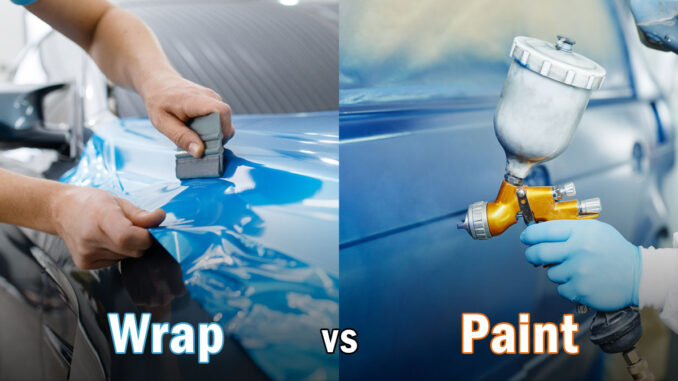
Source:youtube.com
In terms of aesthetics, the choice between wrapping and painting is often a matter of personal preference. Wraps offer superior flexibility and customization, ideal for those looking for a unique or changing style, while paint offers unmatched depth and gloss, creating a classic and enduring aesthetic. From a financial perspective, wrapping can often offer better value, particularly when you factor in the potential for advertising revenue or increased resale value due to the preserved original paint. However, paint is generally more durable and less prone to minor damage, providing a long-lasting finish. Both options require a degree of maintenance to keep them looking their best – wraps need to be cleaned regularly with a non-abrasive cleaner, while paint may need occasional polishing and waxing to maintain its luster.
Making the Decision: Factors to Consider
When you’re deciding between wrapping and painting your vehicle, several factors need to be considered: your budget, the expected lifespan of your vehicle, and your aesthetic preferences. Wrapping may be the most suitable option for newer vehicles or for those who want the flexibility to change their car’s appearance regularly without affecting the resale value. In contrast, painting might be the better choice for older vehicles or those seeking a more permanent, classic transformation that will endure the test of time.
Wrapping Up the Wrapping vs Painting Debate
Both wrapping and painting offer viable, exciting ways to transform your vehicle, each with their unique pros and cons. Before making a decision, it’s vital to consider your individual circumstances, personal preferences, and budget. Your choice should reflect not just your style but also practical considerations like durability, maintenance, and cost-effectiveness. Regardless of what you choose, transforming your vehicle is a rewarding process that allows you to express your individuality and stand out on the road.


